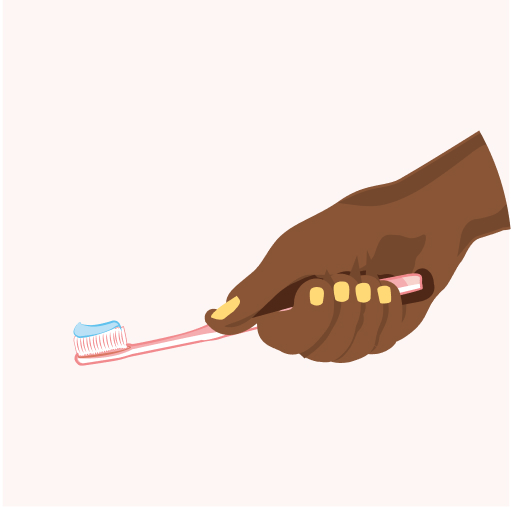
Navigating Safer Sex as a Black Queer Woman
For Black queer women, navigating safer sex means communicating openly with partners, being aware of protection options, and making routine testing part of their self-care routine.
When I first came out as a queer woman over 7 years ago, I felt prepared to discuss safer sex with potential partners. I was well aware of the jokes about dental dams, but I was unprepared for how little was known about how to truly engage in safer sex in the queer community. Despite the myths perpetuated by heteronormativity and misogyny, sex between women is not without risk of sexually transmitted infections (STIs) and other genital issues.
First, let’s set the record straight, sex between women is real sex. Sexual activity is not solely defined by penetrative vaginal sex. In fact, any activity that elicits physical or mental pleasure can be defined as sex. When discussing safer sex, it is important to consider any activities where bodily fluids can be passed, be that through oral, anal, or vaginal sex. It is also important to consider any activities that involve skin-to-skin contact, especially between the mouth, anus, or vulva.
It can be intimidating to broach the subject of safer sex, especially when it is not commonly discussed in the queer community to begin with. Talking about safer sex does not have to be awkward. It can be a way to connect more intimately with a partner. You might explore ways of safer sex that are as pleasurable as they are practical.
Whether you’ve only had sex with other women or have had partners of varying genders, it is recommended by the CDC to be tested for both curable and treatable STIs annually. In particular, some STIs can be transmitted between people with vulvas, such as human papillomavirus (HPV), herpes, and trichomoniasis. People with vulvas also have a 2.5-fold increase in bacterial vaginosis when engaging with same-sex partners. Testing for these conditions can be done during your annual physical with a healthcare provider or in-between visits, as needed. It is ideal to get tested between partners, as well as after any high-risk activities – such as having sex without protection – or known exposures. Dr. Stella Safo, an urgent care physician with Callen-Lorde Community Health Center, emphasizes this point. “It’s possible for someone to have contracted an STI when they had a certain kind of sex (for example, insertive vaginal sex with a cis man) and not have symptoms for months or years, long after they’ve stopped having this kind of sex. For this reason, it matters that you’re tested for STIs at least once yearly.” It is also essential to ask your potential partners about their statuses.
Approach the subject in a calm manner and in a private space. It may be helpful to lead the conversation by discussing how much you care about both your partner’s health and yourself to ease nerves around the subject. You might even offer to go get tested together for support. If your partner gives you a hard time about getting tested or disclosing their status, it is critical that you reconsider engaging in sexual activity with them. They might be withholding information about their own STI status or fearful about testing positive. Fear of positive STI results is not a good reason to avoid testing altogether. Safer sex practices are an opportunity to demonstrate respect, healthy boundaries, and open communication with new partners.
Getting tested for STIs routinely and knowing your status is an important part of sexual health for everyone, but stigma associated with STIs can discourage individuals from getting tested or being upfront with providers about sexual activity. “It’s most important to remember that clinicians do not – [or] at least should not – consider a request for STI testing as indicative of any kind of judgment on your lifestyle or choices,” says Dr. Safo. “So, ask for STI testing and be confident that you’re doing the best thing for your health.” Make sure you are transparent with your medical provider about the types of sexual activities you engage in so that they can order the appropriate tests. For example, pharyngeal (throat) screening looks for STIs that have been transmitted orally.
If your partner discloses that they are living with an STI, don’t fret, and certainly don’t shame them. Take a moment to honor their vulnerability. Safer sex is still possible with the help of barrier methods, medication, and healthy communication.
Some STIs, like herpes simplex virus (HSV or cold sores) and human papillomavirus (HPV or genital warts), can be spread through skin-to-skin contact. Sexual activities that could lead to this include:
- Oral (mouth-to-vulva)
- Vulva-to-vulva contact (scissoring/tribbing)
Broken skin in or on the mouth or vulva increases risk of infection. Cross-contamination of fluids can also spread STIs, like chlamydia and gonorrhea. Screening for HPV is done via pap smear, and the virus itself can be prevented through a vaccine series. You can discuss the HPV vaccine with your healthcare provider – it is available for patients ranging from ages 11 through 45. Herpes can be prevented by avoiding contact during oral or genital outbreaks, as well as taking suppressive medication to reduce frequent outbreaks. Condoms, dental dams, and gloves are a great way to reduce your risk of STIs, especially those spread by skin-to-skin contact.
Mixing vaginal fluids can also lead to yeast infections and bacterial vaginosis. Learn what a healthy baseline is for your body so that you can detect potentially symptomatic changes, such as odor or discharge. It is essential to avoid using food items, such as syrup, whip cream or caramel to enhance the experience of oral sex. These items can disrupt vaginal pH, leading to infections. If you happen to notice a change in your partner’s taste or smell that is concerning, take a moment to kindly and compassionately communicate your concerns and encourage them to see a doctor.
Many queer women don’t use dental dams because they don’t know they exist or where to get them but they are a great protective measure. Even though dental dams have a bad reputation, they work well with additional lubricant. If the first few times are awkward, remember that all new things take time. If you cannot find dental dams, you can use a condom cut lengthwise instead.
Another remnant of misogyny is the myth that one should not ‘need’ lubricant. Many women feel that self-lubrication is indicative of arousal or lack thereof, but lubricant is our friend! Vaginal dryness is experienced at all ages, though most common after menopause, and it shouldn’t be frowned upon if you turn to lubricant to enhance your experience. Communicate with your partners about what is typical for you, then consider introducing lubricant into your sex routine. It’s a great way to make sexual activity more pleasurable, long-lasting, and safe, as a lack of lubricant can lead to vaginal tears from finger penetration, the use of toys, or other activities. Generally, water-based lubricant is compatible with most bodies and sex toys. There are many brands and types available, so take the time to find one that works well with your body. This can be a sexy activity to do with a partner. You might find a lubricant that elicits a new sensation or experience altogether. Still, if you remain concerned about vaginal dryness, consult your medical provider and ask what other remedies, like vaginal estrogen, may be right for you.
Introducing toys into a sexual dynamic can be a fun and exciting way to enhance your sex life. All toys should be properly sanitized before and after use, especially if they have come in contact with the mouth, vagina, or anus. Bacteria and germs stay on the surface of toys and can be reintroduced if used again without being properly washed. Wash your toys with the appropriate cleansers – a mild antibacterial soap and warm water will usually suffice. Sex toy cleaners are specially formulated to remove fluids and kill residual bacteria on various types of materials (i.e. silicone, glass). Toys should be rinsed thoroughly after cleanser use. You might consider using condoms on penetrative toys to simplify clean up or if sharing between partners. It is important to note that some STIs, such as chlamydia, are spread through vaginal fluids. These can contaminate sex toys. Silicone toys pose the highest risk of harboring bacteria, as they can become porous if not properly used and cared for. Never use silicone-based lubricant with silicone sex toys – this can degrade the toy, inviting pathogens to remain within its material.
In all, though coming out brings many challenges, navigating safer sex does not have to be one of them. I was empowered to have mature and transparent conversations with potential partners, and I am confident others can do the same. So the next time you’re packing for an overnight trip, plan ahead and toss a little lubricant, a dental dam, and maybe even a toy or two into your bag with your lipgloss.
Note: not all women have vulvas, and not all people with vulvas are women.
More Content
LGBTQIA+ Health
Let’s Talk About it: Black LGBTQIA+ Health Disparities
In 2021 I had finally gone to...
LGBTQIA+ Health
Misinformation and homophobia in the time of monkeypox (MPV)
We’re calling out the disproportionate impact of...












